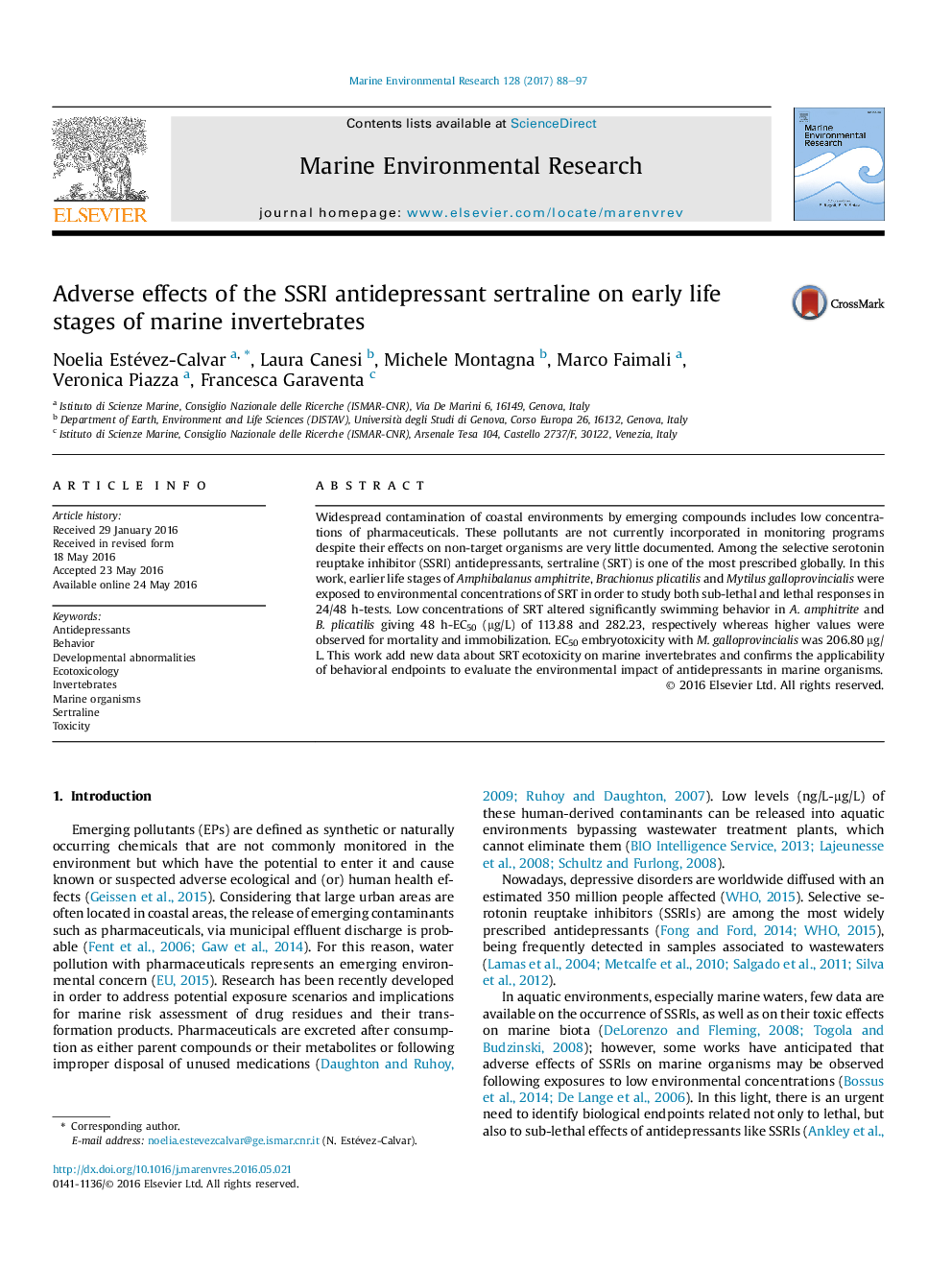| Article ID | Journal | Published Year | Pages | File Type |
|---|---|---|---|---|
| 5766279 | Marine Environmental Research | 2017 | 10 Pages |
â¢Acute toxic effects of environmental concentrations of sertraline (SRT) are studied in non-target marine organisms.â¢24 h/48 h toxicity values of SRT vary among mortality, immobilization, embryotoxicity and swimming behavior.â¢Swimming behavior of barnacles and rotifers larvae is a sensitive endpoint of SRT ecotoxicity.â¢LC50/EC50 are <1 mg/L confirming the toxicity of SRT to early stages of marine organisms.
Widespread contamination of coastal environments by emerging compounds includes low concentrations of pharmaceuticals. These pollutants are not currently incorporated in monitoring programs despite their effects on non-target organisms are very little documented. Among the selective serotonin reuptake inhibitor (SSRI) antidepressants, sertraline (SRT) is one of the most prescribed globally. In this work, earlier life stages of Amphibalanus amphitrite, Brachionus plicatilis and Mytilus galloprovincialis were exposed to environmental concentrations of SRT in order to study both sub-lethal and lethal responses in 24/48 h-tests. Low concentrations of SRT altered significantly swimming behavior in A. amphitrite and B. plicatilis giving 48 h-EC50 (μg/L) of 113.88 and 282.23, respectively whereas higher values were observed for mortality and immobilization. EC50 embryotoxicity with M. galloprovincialis was 206.80 μg/L. This work add new data about SRT ecotoxicity on marine invertebrates and confirms the applicability of behavioral endpoints to evaluate the environmental impact of antidepressants in marine organisms.
